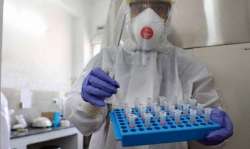Plasma jets may kill novel coronavirus within seconds: Study
The spray using plasma fed by argon killed all the coronavirus on the six surfaces in less than three minutes, and most of the virus was destroyed after 30 seconds.

Plasma jets may kill the novel coronavirus on surfaces such as metal, leather, and plastic in as a little as 30 seconds, according to a study which suggests that plasma could promise a significant breakthrough in the fight against the spread of Covid-19.
Plasma is one of the four basic states of matter and can be created by heating a stable gas or subjecting it to a strong electromagnetic field.
Published in the journal Physics of Fluids, the modelling study conducted in June showed strains of the novel coronavirus on surfaces like metal, leather, and plastic were killed in as little as 30 seconds of treatment with argon-fed, cold atmospheric plasma.
The researchers from the University of California, Los Angeles (UCLA) in the US used an atmospheric pressure plasma jet they built with a 3D printer to spray surfaces that were treated with SARS-CoV-2 cultures.
The surfaces included plastic, metal, cardboard, and basketball, football, and baseball leather.
The spray using plasma fed by argon killed all the coronavirus on the six surfaces in less than three minutes, and most of the virus was destroyed after 30 seconds.
Additional testing showed the virus was destroyed in similar times on cotton from face masks.
The novel coronavirus can remain infectious on surfaces for several hours. According to study author Richard E. Wirz, the findings show great potential for the use of plasma in halting the virus’s transmission cycle.
“This is only the beginning. We are very confident and have very high expectations for plasma in future work. In the future, a lot of answers for the scientific community will come from plasma,” Wirz said.
A relatively new technology, cold atmospheric plasma is an ionised, near-room-temperature gas that has proven effective in cancer treatments, wound healing, dentistry, and other medical applications.
The researchers ran a similar coronavirus test with helium-fed plasma, but the helium was not effective, even with treatments up to five minutes.
They believe this was due to lower rates of reactive oxygen and reactive nitrogen when using helium-fed gas, compared to argon.
The researchers said they are building a compact device that could be used widely to treat surfaces for the coronavirus with plasma.
It is a safer, healthier option than chemicals or other treatments, they said.